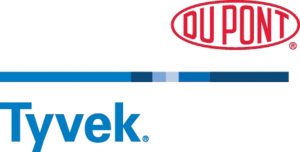As building regulations get tighter and expectations for energy efficiency greater, DuPont™ explain how their Tyvek® membranes can help your project reach even the very highest airtightness Standards.

There has been a new rigorous voluntary approach to energy efficient building in recent years, resulting in ultra-low energy buildings becoming increasingly popular. The philosophy, known as Passivhaus, is growing largely due to an increasing demand for greater performance and lower running costs.
In fact, Passivhaus is now the fastest growing energy performance standard in the world and is widely recognised as a benchmark for airtightness systems. The approach is simple: build a house that has exceptional thermal performance and exceptional airtightness with mechanical ventilation. In other words you create a building that requires minimal heating in winter and that stays cool in the summer while also providing excellent indoor air quality.
In order to achieve anything like the Passivhaus standard it’s essential to use the highest quality products and to make the right decisions when choosing materials. This is especially true for the roof, which is such an integral part of the overall airtightness of the structure – particularly where the roof forms the primary space protection from the outside, such as attic rooms. It’s crucial that roofs are airtight, water-tight and able to withstand wind damage.
TESTING AIRTIGHTNESS SYSTEMS
Earlier this year, the BRE International Testing and Certification organisation conducted independent testing of airtightness systems against Passivhaus Standards.
In terms of airtightness, Passivhaus recommends less than 0.6 ACH (air changes per hour) with a pressure difference between inside and outside of 50 Pa.
In the BRE airtightness tests, a timber structure was enclosed entirely in a DuPont™ Tyvek® and AirGuard® airtightness system of membranes, tapes and sealing products with Tyvek® Supro installed on the roof. Tyvek® FlexWrap EZ and Tyvek® tapes ensured a tight, long lasting seal
The results impressed even the BRE scientists and technicians, who recorded a reading of 0.24 ACH, a vast improvement on the target figure of 0.6 ACH. This was one of the best recordings they had ever achieved.

The tried and tested Tyvek® and AirGuard® airtightness system continually evolves to meet changing market requirements with even more innovations to be introduced over the coming months.
As building regulations get tighter and expectations for energy efficiency increase, it’s essential that roofs are airtight, water tight and able to withstand wind damage. Therefore by choosing wisely in the planning stage and you can ensure quality and endurance, as well as compliance with regulations. With a little forethought, it’s possible to meet, or as seen in the BRE testing of the straightforward Tyvek® and AirGuard® airtightness system, surpass even the highest Standards.


